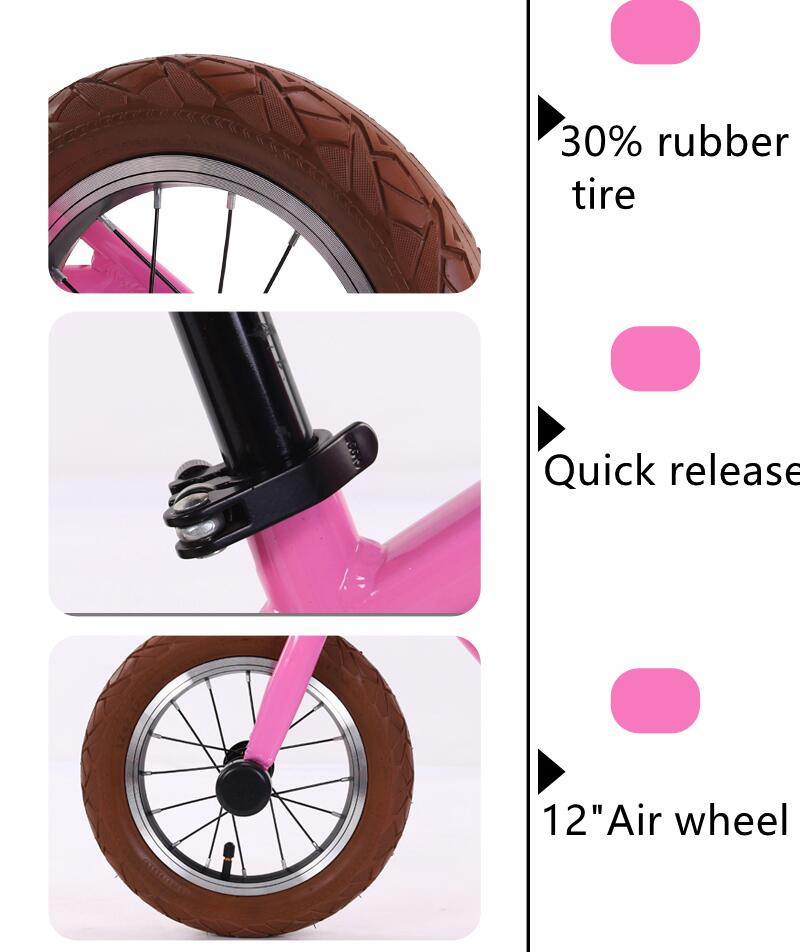do balance bikes help babies walk
Do Balance Bikes Help Babies Walk?
In recent years, balance bikes have gained popularity as a practical tool for toddlers learning to navigate the world of mobility. While the primary purpose of balance bikes is to help children develop their biking skills, many parents wonder whether these bikes can also facilitate walking development in babies. This article explores the connection between balance bikes and walking skills, shedding light on their potential benefits and considerations.
Understanding Balance Bikes
Balance bikes are two-wheeled cycles without pedals, designed specifically for young children, typically aged 18 months to 5 years. They allow kids to learn how to balance and steer without the additional complication of pedaling. By pushing themselves with their feet, children can gain confidence in their ability to balance, which is a critical skill not only for riding a bike but also for walking.
The Mechanics of Walking
Walking is a complex physical activity that requires coordination, balance, and strength. Babies typically begin standing and taking their first steps around 9 to 15 months of age. During this stage, their muscles are developing, and their sense of balance is still maturing. Early intervention tools such as push toys and walkers have historically been used to encourage walking, but the question arises can balance bikes play a role in this developmental phase?
Benefits of Balance Bikes
1. Enhancing Balance and Coordination Balance bikes help toddlers develop their sense of balance, which is crucial for both biking and walking. When children glide on a balance bike, they learn to shift their weight and steer in different directions, exercises that cultivate their coordination. This skill set can translate to walking as children become more adept at managing their body movements.
2. Building Muscle Strength Using a balance bike requires the use of major muscle groups in the legs, core, and back. As kids propel themselves forward with their feet, their leg muscles strengthen. Stronger leg muscles can assist with walking, making the transition from crawling to walking smoother and more natural.
3. Developing Confidence Confidence plays a pivotal role in any learning process, including walking. Balance bikes allow children to conquer their fear of falling by learning in a safe environment where they can put their skills to the test gradually. As they learn to balance and ride, they often develop greater overall confidence, which can encourage them to take their first steps into walking.
do balance bikes help babies walk

4. Promoting Independence Balance bikes encourage children to move on their own terms, fostering a sense of independence. This autonomy can be critical for walking, as taking steps without support often requires a willingness to explore one's surroundings. Balance bikes get children accustomed to moving on their own, making the transition to walking more seamless.
Considerations for Parents
While balance bikes provide numerous benefits, they should not be seen as a one-size-fits-all solution for walking development. Here are some considerations for parents
- Age Appropriateness Ensure that the child is ready for a balance bike based on their developmental stage. Not all toddlers will be interested or capable of using a balance bike at the same age.
- Supervision and Safety As with any activity, safety is paramount. Parents should supervise their children while they are using a balance bike and ensure they are equipped with appropriate safety gear, such as helmets.
- Complementary Activities Balance bikes should be complemented with other forms of physical development. Encourage a variety of activities involving walking, running, and climbing to provide a well-rounded motor skills experience.
- Individual Differences Every child develops at their own pace. What works for one child may not work for another. It’s important to celebrate small milestones in walking and not to force a timeline.
Conclusion
In conclusion, while balance bikes primarily aim to teach cycling skills, they can play a supportive role in helping babies walk by enhancing balance, strength, and confidence. Through regular use, children can develop the necessary skills that will benefit them as they transition from crawling to walking and eventually to riding a traditional bike. As with any developmental tool, the key lies in understanding the individual needs of the child and using balance bikes as one part of a diverse toolkit for fostering mobility and independence.
-
Three-Wheel Light-Up Scooter Benefits for KidsNewsJul.11,2025
-
The Importance of Helmet Safety When Using a Kids ScooterNewsJul.11,2025
-
Nurturing Early Mobility with an Infant ScooterNewsJul.11,2025
-
How to Choose the Safest Tricycle for KidsNewsJul.11,2025
-
Fixing a Squeaky Baby Push Tricycle in MinutesNewsJul.11,2025
-
Cleaning and Maintaining a Tricycle for Big KidNewsJul.11,2025
-
Unleash Fun and Safety with Our Premium Kids Scooter CollectionNewsJun.06,2025








